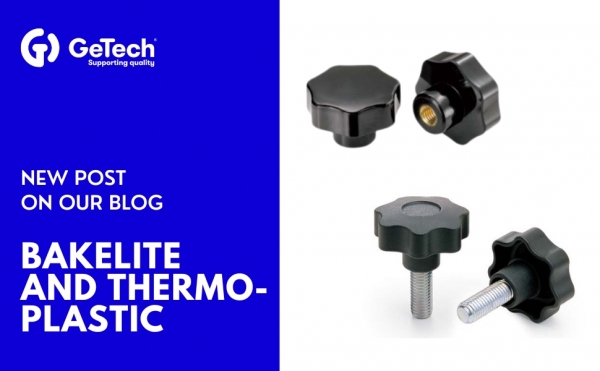The first column of the year features two of the main materials of our COMPO line: bakelite and thermoplastic. In order to better understand those materials, we would like to describe them in details.
Bakelite
Very few people know that the ancestor of plastic, namely bakelite, was created for the first time in 1907 by the Belgian chemist Leo Baekeland. This innovative substance was a sort of thermoset resin, created by the condensation between phenol and formaldehyde. As a result of the action of heat and suitable catalysts, these resins are transformed from thermoplastics into thermosetting and insoluble masses. For many years, bakelite has proved to be fundamental in the construction of phones, radios, kitchen utensils, buttons, jewellery and more parts to assemble. On one hand, unlike plastic, bakelite was solid, easy to work, light and insulating. On the other hand, it presented some disadvantages: it didn’t display many colour variations, and its shapes didn’t really fit the design. An apparently indestructible material, nevertheless through the years it was prone to the formation of small cracks.
Thermoplastic
In this section we are going to examine in detail the main features of thermoplastic. This material is known to be flexible and elastic, thanks to its molecular structure. Thermoplastics consist of a long series of molecules, also known as polymers. When solid, these chains of molecules are well bonded. Once they heat up, they decompose, making the material flexible or even fluid. This kind of plastic is frequently used for high-purity applications in the semiconductor and aerospace industries, and in primary research (e.g. at CERN). One of the principal application areas of thermoplastics are the piping systems found in cities. From time to time, the cost of protecting steel pipes from harsh environments can be high. As a consequence, thermoplastics prove to be the most suitable material, considering that they endure corrosive environments.
In conclusion, choosing the material deeply influences the product’s use and its technical application, which is why we strongly believe it is essential to understand its inherent characteristics, in order to make the right choice.
How is it possible to determine the best material, according to our specific needs?
For instance, if we are aware that our product will be in contact with high temperatures, e.g. in ovens, it is preferable to choose bakelite, which resists to atmospheric and chemical agents, and is an excellent electrical insulator as well. The downside is that this material is more delicate than thermoplastic, moreover it could be chipped and damaged. In contrast, thermoplastic is not heat-resistant, although it resists shocks better; it is also cheaper and less polluting.
If you’re interested in all the entire product line with these materials, click here: https://www.getechsrl.com/en/products/compo.html.
In case you need any information or support requests, please do not hesitate to contact our team of professionals: https://www.getechsrl.com/en/contact-getech-srl-italy.html.

